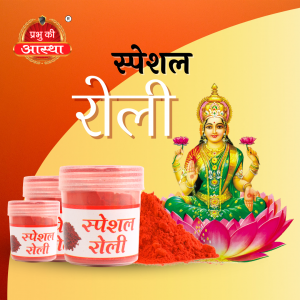PUJA ITEMS
-
 Read more
Read morePuja Kapada, also known as puja cloth or altar cloth, is an essential part of Hindu puja ceremonies. It is a piece of cloth used to cover the altar or the puja space during the ceremony.
Puja Kapada is made of different materials, including cotton, silk, and satin, and is available in various colors and designs. The choice of material and color may vary depending on the deity being worshipped, the occasion, or personal preference.
During puja ceremonies, Puja Kapada is used to cover the altar or the puja space to create a sacred and pure environment. It is believed to protect the deities being worshipped from negative energies and bring blessings to the devotees.
Puja Kapada is also used to cover the offerings made during the puja ceremony, such as flowers, fruits, and sweets. It is believed to enhance the purity and sanctity of the offerings and prevent them from being contaminated.
In addition to its use in puja ceremonies, Puja Kapada is also used as a gift or offering to the deities or the temple. It is considered a symbol of devotion and respect towards the divine.
In conclusion, Puja Kapada is an essential part of Hindu puja ceremonies and is used to create a sacred and pure environment. Its use enhances the purity and sanctity of the offerings and protects the deities from negative energies. Moreover, it is considered a symbol of devotion and respect towards the divine and is used as an offering or gift in Hindu culture.
-
 Read more
Read moreKumkum, also known as kumkuma or sindoor, is a powder that is traditionally used in Hindu religious rituals and in traditional Indian makeup. It is made from a combination of turmeric and slaked lime, which gives it a distinctive red-orange color. Kumkum is often applied to the forehead, as a bindi or tilak, as a symbol of marriage, and for religious or cultural purposes. In addition to its use in rituals, kumkum has also been used in traditional medicine for its antiseptic and anti-inflammatory properties. Some people use it as a natural remedy for skin conditions such as acne and eczema. While kumkum is generally considered safe for external use, it should not be ingested or used in excessive amounts. It is important to purchase kumkum from a trusted source and to avoid using products that contain harmful additives or chemicals.
-
 Read more
Read moreRed sandalwood powder, also known as “rakta chandan,” is a powder made from the wood of the red sandalwood tree, which is native to India. It is commonly used in Hindu religious ceremonies and pujas for its spiritual and medicinal properties.
In Hinduism, red sandalwood powder is believed to have purifying and protective qualities, and is often used to make a paste or powder for tilak, a mark applied to the forehead as a sign of devotion. It is also used to make incense and other offerings during religious ceremonies.
Red sandalwood powder is also believed to have medicinal properties, and is often used in traditional Ayurvedic medicine to treat various ailments, including skin disorders, digestive issues, and respiratory problems. It is also believed to have anti-inflammatory and anti-bacterial properties.
When using red sandalwood powder for puja or religious ceremonies, it is important to ensure that you are using high-quality, pure powder from a trusted source. It is also important to follow proper hygiene and safety precautions, such as using clean utensils and avoiding contamination.
Overall, red sandalwood powder is a valued and versatile ingredient in Hindu religious ceremonies and traditional medicine, and is still widely used today for its spiritual and medicinal properties.
-
 Read more
Read moreGum benzooin, also known as styrax benzoin, is a resin obtained from the bark of trees belonging to the genus Styrax. The resin is commonly used in traditional medicine and is believed to have various health benefits.
Gum benzooin has been traditionally used for its antiseptic and anti-inflammatory properties, and is often used topically to treat skin conditions such as eczema and psoriasis. It is also believed to have a calming effect on the mind and body, and is often used in aromatherapy to promote relaxation and reduce stress and anxiety.
In addition to its medicinal uses, gum benzooin is also commonly used in perfumes, cosmetics, and incense due to its pleasant, sweet, and warm aroma. It is also used as a flavoring agent in food and beverages, and is particularly popular in Asian cuisine.
However, it is important to note that gum benzooin can cause allergic reactions in some individuals, particularly those with sensitive skin. It is also important to use high-quality, pure gum benzooin to avoid potential contamination and ensure maximum benefits and safety.
-
 Read more
Read moreRoli, also known as kumkum, is a red-colored powder that is widely used in Hindu religious ceremonies and rituals. It is made by grinding turmeric and other natural ingredients, and is often mixed with sandalwood paste or other items to create a fragrant and colorful paste. Roli is considered to be a sacred substance, and is used to mark the forehead or other body parts as a sign of blessings or auspiciousness. The red color of roli is believed to represent the creative energy of the divine feminine, and is often used to symbolize devotion, purity, and good fortune. Roli is also used in various Hindu festivals and ceremonies, such as weddings, and is often offered to deities as a sign of respect and devotion. The use of roli is an important aspect of Hindu culture and is believed to have spiritual significance in enhancing one’s connection with the divine.
-
 Read more
Read moreSarva Ausadhi, also known as Sarva Roga Nivarani or the Universal Medicine, is a concept in Ayurveda, the traditional system of medicine in India. It refers to a collection of herbs and natural substances that are believed to have the ability to cure all diseases and ailments.
The term “sarva” means all or everything, and “ausadhi” means medicine. According to Ayurveda, the Sarva Ausadhi is a combination of various medicinal plants, minerals, and other natural substances that work together to promote healing and restore balance to the body.
Some of the common ingredients used in Sarva Ausadhi include turmeric, ginger, neem, holy basil, ashwagandha, amla, and guggulu. These herbs and natural substances are believed to have anti-inflammatory, anti-bacterial, anti-viral, and anti-fungal properties, and can help boost the immune system, improve digestion, and support overall health and well-being.
In Ayurveda, the Sarva Ausadhi is often used in the treatment of chronic diseases such as arthritis, diabetes, asthma, and heart disease. It is also used as a preventive measure to promote general health and prevent illness.
However, it is important to note that Ayurvedic treatments should always be taken under the guidance of a qualified practitioner, as some of the herbs and natural substances used in Sarva Ausadhi can have potential side effects and interactions with other medications.
In conclusion, Sarva Ausadhi is a concept in Ayurveda that highlights the potential of nature to provide healing and promote well-being. It is a reminder of the importance of natural remedies and the power of plants and herbs in promoting health and vitality.
-
 Read more
Read morePuja Samagri is a collection of various items used in Hindu worship ceremonies, known as pujas. These items can include incense sticks, lamps, flowers, sacred powders, and various other offerings. Puja Samagri is considered essential for any Hindu worship ceremony, as they are believed to help create a sacred atmosphere and invoke the presence of…
-
 Read more
Read morePuja Samagri is a collection of various items used in Hindu worship ceremonies, known as pujas. These items can include incense sticks, lamps, flowers, sacred powders, and various other offerings. Puja Samagri is considered essential for any Hindu worship ceremony, as they are believed to help create a sacred atmosphere and invoke the presence of…
-
 Read more
Read moreTrishul, also known as a trident, is a powerful symbol in Hinduism that represents Lord Shiva’s power and authority. It is commonly used in puja and other religious ceremonies. The trishul is made up of three prongs, each representing the three fundamental aspects of existence – creation, preservation, and destruction. These three prongs also symbolize…
-
 Read more
Read moreRahu Puja Samagri: Essential Items for Rahu Dosha Nivaran Rahu Puja is a sacred Hindu ritual performed to appease the celestial planet Rahu, which is believed to influence an individual’s fate, health, and prosperity. Rahu, although not a physical planet but a shadowy celestial entity, is known to bring obstacles, confusion, and misfortune when it…
-
 Read more
Read moreRoli, also known as kumkum, is a red-colored powder that is widely used in Hindu religious ceremonies and rituals. It is made by grinding turmeric and other natural ingredients, and is often mixed with sandalwood paste or other items to create a fragrant and colorful paste. Roli is considered to be a sacred substance, and…
-
 Read more
Read moreRaw cotton, also known as unprocessed cotton, is not commonly used for puja or other religious rituals in Hinduism. However, cotton is a significant crop in India, and in some regions, cotton offerings may be made to deities, especially during festivals like Makar Sankranti. During Makar Sankranti, which marks the transition of the sun into…

